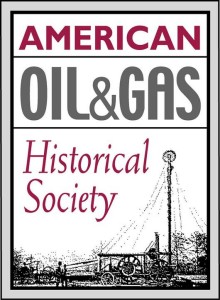Old Oil Stocks – in progress “K”
Here is some research on Old Oil Stocks – in progress “K” – but the work will not find lost riches – see Not a Millionaire from Old Oil Stock. The American Oil & Gas Historical Society, which depends on your donation, does not have resources to provide free research of oil corporate histories.
However, AOGHS continues to look into forum queries as part of its energy education mission. Some investigations have revealed little-known stories like Buffalo Bill’s Shoshone Oil Company; many others have found questionable dealings during booms and epidemics of “black gold” fever like Arctic Explorer turns Oil Promoter.
Visit the Stock Certificate Q & A Forum and view company updates regularly added to the A-to-Z listing at Is my Old Oil Stock worth Anything? AOGHS will continue to look into forum queries, including these “in progress.”
Kantexo Oil & Gas Company sprang from the 1916 discovery of Oklahoma’s Covington-Garber Oil Field, east of Enid. By 1919 the field had 760 producing wells and had spawned many competing oil ventures, including Kantexo. The oilfield produced about 20 million barrels of oil by 1925.
Kantexo Oil & Gas incorporated on September 4, 1917, and Emery-Knox Drilling Company formed the following month. Kantexo’s principal investors came from Enid, Oklahoma, today home to the Cherokee Strip Regional Heritage Center.
In November 1917 the Wichita Eagle in Kansas reported Kantexo Oil & Gas had sold nearly $30,000 of capital stock within 60 days and “built a standard rig on their lease and had signed a drilling contract with the Emery Knox Drilling Company for their first well.”
Kantexo Oil & Gas drilled this wildcat well, the Bowers No. 1, east of Covington (Section 9, Township 21 North, Range 3 West). Despite difficulties in setting the 10-inch casing, by July 22, 1918, the exploratory well was below 1,575 feet. The Oil and Gas News reported on Februay 27, 1919, the company was “still having trouble with the casing at 2,230 feet” on the Bowers Farm well.
Some records indicate it was a natural gas well, but Kantexo Oil & Gas does not appear to have prospered. Emery-Knox Drilling Company was likewise out of business by 1923. The Oklahoma State Business Records Department has incorporation information on the Kantexo Oil & Gas Company that can be accessed for a fee.
Keck Oil Company
Keck Oil Company’s California charter was suspended for non-payment of franchise and license taxes on January 2, 1962. The company was without assets, liabilities or ongoing business when purchased in 1970 as an inactive shell company into which Western International (a film distributor) could be merged.
Renamed Keck First Leisure, Forbes magazine later reported it to be one of several companies under “an intense fraud investigation” by the Securities and Exchange Commission. The first California oil well in 1876 launched many industries, including oilfield service companies, pipelines and refineries for producing kerosene.
Ken-Saw Petroleum Corporation
Ken-Saw Petroleum Corporation appears to have drilled only one well, the Fee No. 1, in La Fayette County, Arkansas. Trade publications reported on the wildcat well’s progress: “in gumbo” at 2,360 feet (April 19, 1922); “coring” at 2,765 (September 16, 1922); and maximum depth of 2,875 feet (November 4, 1922).
“In gumbo” referred to the soft, sticky, swelling clay formations that fouled drilling tools and plugged piping, both severe problems for drilling crews. “Coring” was the collecting of a cylindrical rock sample from the the bottom of a wellbore. After reaching 2,875 feet deep, no further progress was reported on the Fee No.1 well after November 4, 1922.
Under-capitalized petroleum ventures exploring unproven territory and reliant upon stock sales for operating funds, a single dry hole often meant bankruptcy. The Robert D. Fisher Manual of Valuable and Worthless Securities lists Ken-Saw Petroleum as having had its charter revoked on July 3, 1942. Revocations normally followed extended periods of failure to file required annual reports and pay taxes. Also see the First Arkansas Oil Wells.
King George Oil Company
King George Oil Company’s birth was reported in the Paint, Oil and Drug Review of July 1911. The company was one of several that Bakersfield citizen F. J. Burns organized; others included Bobby Burns Oil Company, Scottish Oilfields Limited, Carnegie Oilfields Limited and the Dominion Oil Company.
King George Oil, with authorized capital stock of $500,000, secured a lease near McKittrick, California (Section 30 of Township 28 South, Range 22 East). McKittrick had been known as Asphaltum because of local petroleum seeps. The company, which began drilling its first and only well, the 1-A, likely depended on stock sales to generate sufficient revenue to continue drilling. Investors gambled the well would produce enough oil to pay healthy dividends and fund further operations.
Although Kern County oil booms would reach staggering production, the McKittrick field was not kind to King George Oil Company. The California Department of Oil, Gas and Geothermal has no details about the well, other than it was plugged at an undetermined date without significant production. The abandoned well site is in an orchard today with little else remaining of King George Oil Company.
Kutz Canon Oil & Gas Company
Kutz Canon Oil & Gas Company was formed in 1946 and was merged into King Oil Inc. in 1961. Kutz Canon Oil & Gas stock certificates in good condition are valued by scripophily collectors for up to $40.
___________________________________________________________________________________
The stories of exploration and production companies joining petroleum booms (and avoiding busts) can be found updated in Is my Old Oil Stock worth Anything? The American Oil & Gas Historical Society preserves U.S. petroleum history. Please support this AOGHS.ORG energy education website. For membership information, contact bawells@aoghs.org. © 2020 Bruce A. Wells.


